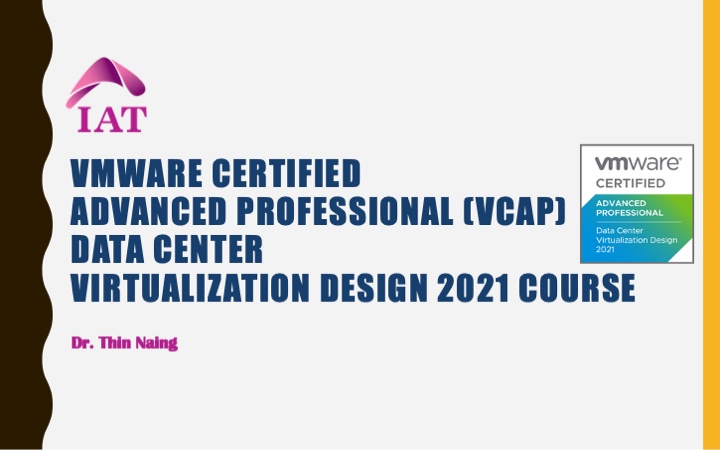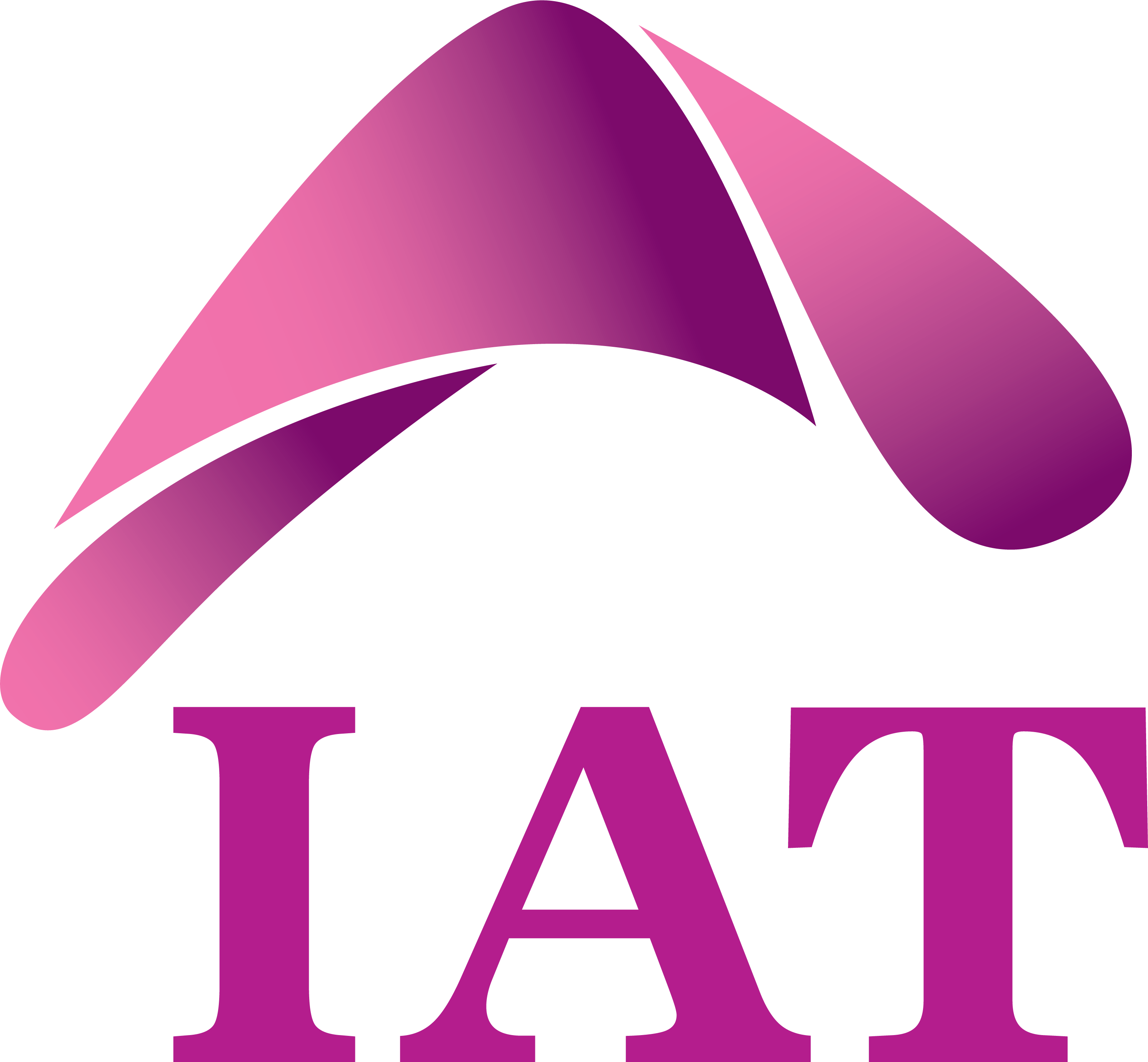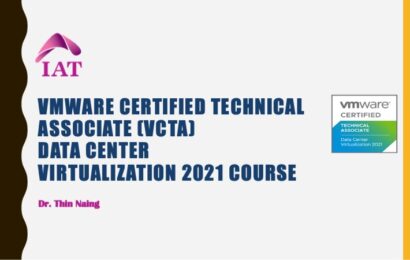
- Instructor: Dr. Thin Naing
- Lectures: 33
- Duration: 50 hours
Categories: VMware
Overview
This training course equips you with the knowledge, skills, and abilities to design a VMware vSphere® 7 virtual infrastructure. You follow a proven approach to design a virtualization solution that ensures availability, manageability, performance, recoverability, and security. The approach presented follows VMware best practices. This course discusses the benefits and risks of available design alternatives and provides information to support making sound design decisions. Given a case study, you practice your design skills by working with peers on a design project.
Course Objectives
By the end of the course, you should be able to meet the following objectives:
- Identify the business objectives for the vSphere environment
- Identify business requirements, constraints, assumptions, and risks for all layers in the vSphere environment
- Apply a framework to a design
- Analyze design choices and best-practice recommendations
- Create a design that ensures availability, manageability, performance, recoverability, and security
- Design the core management infrastructure for an enterprise
- Design the virtual data center for an enterprise
- Design the compute infrastructure for an enterprise
- Design the storage and networking infrastructures for an enterprise
- Design virtual machines to run applications in a vSphere infrastructure
- Design security, manageability, and recoverability features for an enterprise
-
Course Introduction
-
Infrastructure Assessment
-
Lecture 2.1Follow a proven process to design a virtualization solution
-
Lecture 2.2Define customer business objectives
-
Lecture 2.3Gather and analyze business and application requirements
-
Lecture 2.4Document design requirements, constraints, assumptions, and risks
-
Lecture 2.5Use a systematic method to evaluate and document design decisions
-
Lecture 2.6Create a conceptual design
-
-
Core Management Infrastructure
-
Lecture 3.1Determine the number of VMware vCenter® Server ApplianceTM instances to include in a design
-
Lecture 3.2Choose the appropriate single sign-on identity source
-
Lecture 3.3Choose the time synchronization method
-
Lecture 3.4Choose methods to collect log files and ESXi core dumps
-
Lecture 3.5Design a vCenter Server deployment topology that is appropriate for the size and requirements of the data center
-
-
Virtual Data Center Infrastructure
-
Lecture 4.1Calculate total compute capacity requirements for a virtual data center
-
Lecture 4.2Create a virtual data center cluster design that meets business and workload requirements
-
Lecture 4.3Evaluate in the virtual data center the use of several management services, such as VMware vSphere® High Availability and VMware vSphere® Distributed Resource Scheduler™
-
Lecture 4.4Evaluate the use of resource pools in the virtual data center design
-
-
Compute Infrastructure
-
Storage Infrastructure
-
Lecture 6.1Calculate storage capacity and performance requirements for a design
-
Lecture 6.2Evaluate the use of different storage platforms and storage management solutions
-
Lecture 6.3Design a storage platform infrastructure and storage management architecture that meets the needs of the vSphere environment
-
-
Network Infrastructure
-
Lecture 7.1Evaluate the use of different network component and network management solutions
-
Lecture 7.2Design a network component architecture that includes information about network segmentation and virtual switch types
-
Lecture 7.3Design a network management architecture that meets the needs of the vSphere environment
-
-
Virtual Machine Design
-
Infrastructure Security
-
Infrastructure Manageability
-
Infrastructure Recoverability



